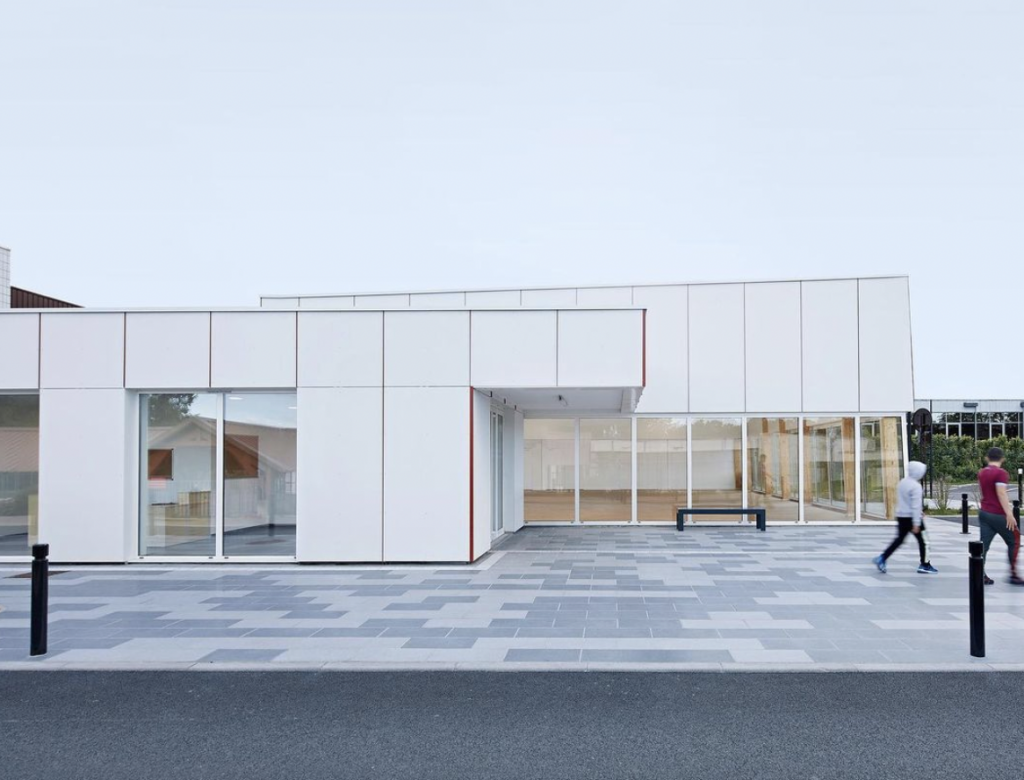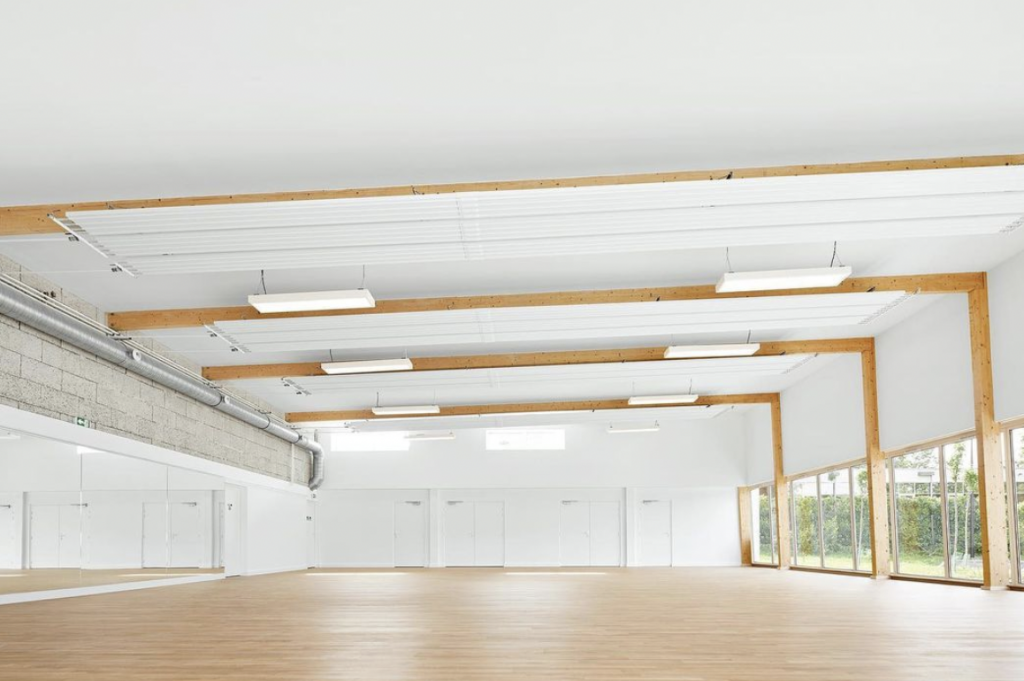Architects Lemoal Lemoal has created the country’s first public building, the Pierre Chevet sports centre built from hempcrete in France.
The 380 square metre sports centre is based in the town of Croissy-Beaubourg near Paris. The building contains an exercise hall and changing rooms. The walls are infilled with hempcrete blocks. The outside of the building is covered in cement fibre panels that protect the blocks. Inside features wooden half-vaulted structures that meet the hempcrete walls for support proving space without columns.
Hempcrete construction
The blocks were made using lime mixed with hemp hurds which are the woody inner parts of the stems of the hemp plant. The wooden stems were originally viewed as a waste part of the plant after the oil had been extracted. The hemp panels were grown and fabricated within 500 kilometres of the construction site which reduced transport emissions while helping the local economy.
The lower sections of the walls were treated with hemp plaster which is a technique usually used to conceal the material’s texture. Some of the walls were left untreated to reveal the blocks and help with the acoustic quality of the building.
It can be assembled dry and has an interlocking system that does not need adhesive or mortar. It also has natural insulation quality helping to keep the building warm.
Lemoal Lemoal hopes this will encourage other architects to use hempcrete in public buildings.
Read more: Could hemp help to reduce climate change and environmental damage?
Read more: Cumbria’s first CBD cafe opens its doors
Hempcrete vs concrete
Hempcrete has many benefits including environmental. It takes less water than concrete to produce making it a greener alternative.
Concrete is responsible for almost a 10th of the world’s industrial water use. In cities, concrete causes a heat-island effect by absorbing the warmth of the sun and trapping gases from car exhausts. Hemp can absorb large amounts of carbon and is considered a ‘carbon-negative material. More carbon is removed by the plant than emitted by its use on-site.
The speed that hemp grows means it is a faster alternative to timber in buildings. The woody stem supports the plant that can grow up to 4.5 meters in 4 months in the UK climate. When growing, it is naturally pest-resistant so does not need chemical fertilisers or insecticides.
It also has high thermal and acoustic properties while being fire resistant to the REI 30 standard which means it will hold up for 30 minutes in a fire.
The post Hempcrete: architects in Paris create first public building using the biomaterial appeared first on Cannabis Health News.




